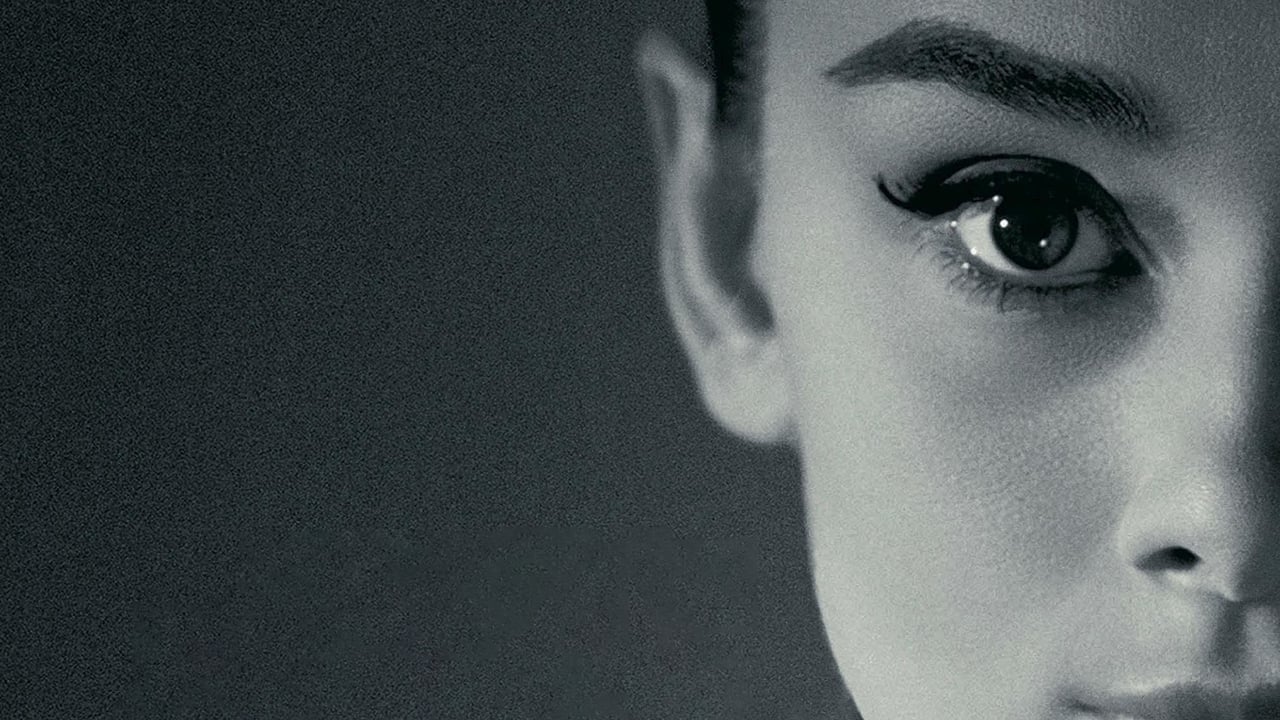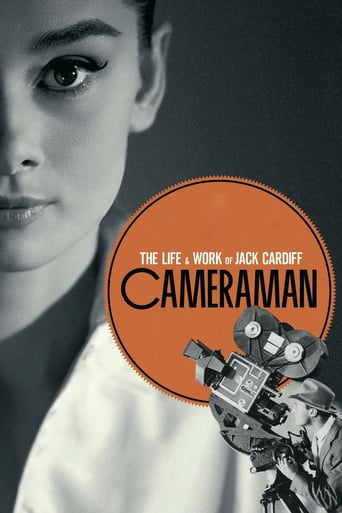

Terrible acting, screenplay and direction.
... View MoreIt is encouraging that the film ends so strongly.Otherwise, it wouldn't have been a particularly memorable film
... View MoreThrough painfully honest and emotional moments, the movie becomes irresistibly relatable
... View More.Like the great film, it's made with a great deal of visible affection both in front of and behind the camera.
... View MoreJack Cardiff was a master cinematographer who became inspired through the Powell & Pressburger partnership with films such as Life and death of Colonel Blimp, A matter of life and death, The red shoes and Black Narcissus which bagged him an Oscar for best colour cinematography.Cardiff in interviews filmed over several years comes off as modest, engaging, enthusiastic and knowledgeable. We see the influence of paintings from the masters in his work as well as problem solving with the challenges he faced in the still early days of cinema, now its the special effects people who take care of it all.As well as numerous clips of films he had worked on, collaborators we have super fans such as Martin Scorcese who has previously expressed his admiration of the films of Powell & Pressburger. It would had been nice to have heard from Francis Coppola another fan and some more British directors.Cardiff later moved into directing and was Oscar nominated for Best Director for Sons and Lovers but when the directing work dried up he moved back into cinematography, even lighting Rambo: First Blood Part 2 a film I have in the past complained about not being able to see anything as all the action took place in the dark.
... View MoreWhat a talented, honest, and generous man Jack Cardiff was. Talented not just because as a camerman or a director he worked on so many successful films but because it was his work that made them memorable. He's honest because in this hour-and-a-half biographical tribute he confesses his weaknesses and never brags. He began knowing nothing about technicolor except what he learned from studying painting. And how would he like to end his career? He'd like to "drop dead on the set." Generous because he credits his co-workers, though he's willing to refer generally to certain "strains." He knows nothing of CGIs but he doesn't put them down, as some curmudgeons might. His presentation of self is easy going, laid back, quietly ironic.This cinematic study gave me a greater appreciation of the use of lighting and shadows, of colors, and of the technical aspects of shooting a film -- all of which I may forget tomorrow.But -- well, look at this. There is a startling scene in "The Red Shoes" in which Leonide Massine in a garish costume leaps in from offscreen and lands next to the still and reflective figure of Moira Shearer. It's not just scary. It's spooky. And here's how photographer Cardiff shot the scene. Massine leaps in at the usual 24 frames per second. At the top of his leap, for a fraction of a second, Cardiff speeds up to 48 frames per second, before returning to the 24 fps standard. That overcranking of the camera slows the leap down for a moment at its zenith, so that Massine's slightly demonic figure seems to pause and hang in the air before dropping to the floor. It's barely noticeable but it adds to the impact of the movement.Cardiff grew old and wound up directing shorts and a couple of crummy B movies, but it didn't seem to depress him much because he loved his work, taking whatever came his way. (He died at 94.) And he continued his painting. Some were originals but many were precise copies of studies by people like Degas and Renoir, whose work he enjoyed but couldn't afford to buy. Pretty sensible when you come to think about it.Anyway, I'll pretty much skip over the "educational" value of the documentary because, after all, that's its main function, isn't it? As it turned out, I learned some things about things I thought I already knew things about. Chiaroscuro can have more than one light, source, for instance. Cardiff illustrates this point in showing us a beautiful photographic portrait he took of the flawless Audrey Hepburn. And Marlene Dietrich -- every film freak knows that she was fussy about how she was lighted, having brought certain obsessions with her from von Sternberg. I knew she had a "good" profile but never dreamed that she insisted the overhead light be at an angle of 45 degrees from her facial place in order to disguise what she thought was a tiny but unsightly bump in her nose. And it never occurred to me -- nor would I have cared if I did know -- that she insisted her make up man draw a wight line from her eyebrows to her nostrils to make her nose seem straighter.What a remarkable man.
... View MoreThis is a wonderful tribute to Jack Cardiff and really gives the viewer insight into what it was to be a cinematographer during film's glory days of the 40s, 50s and beyond. This is wonderful, as MOST biographies about movie folks were about the actors and directors--and NEVER about technicians. So, in this case, you get to see and appreciate the use of color, framing, the use of matte paintings and other aspects of camera-work.The film consists of lots of clips of films Cardiff made. In addition, they were fortunate enough to have lots of footage of Cardiff reminiscing about his work and the people he's known over the years. And, considering how incredibly old Cardiff was, he sure seemed a lot younger and alert than you'd expect from a man nearly 100! In addition, there are lots of interviews with those who worked with him or who appreciated and learned from him (such as Martin Scorsese). All in all, a wonderful tribute but also a great lesson to die-hard film buffs. Well worth seeing.
... View MoreA documentary about acclaimed cameraman and film director Jack Cardiff, who had a lengthy career in British films, Hollywood and internationally, and worked with many of the biggest names in cinema.Jack Cardiff had a pretty amazing life. The son of theatrical performers, he was a child actor in silent pictures, then a jobber in British films in the thirties, was selected by Technicolor in 1936 to be the first person in the UK to be trained in its use, won an Oscar for Black Narcissus in 1947, went on to work with everyone from Humphrey Bogart to Marilyn Monroe to Sylvester Stallone, directed a dozen movies of his own (my favourite of which is Girl On A Motorcycle but the most famous is probably Sons And Lovers), was still making features in his seventies and carried on working pretty much up until his death in 2009 aged 94. What a guy. This film is a series of interviews with him and those who worked with him, shot over several years, and he is witty, informative, modest and insightful. His conception of what movie photography should really be - a moving extension of painting - is fabulous, with many clips beautifully illustrating this ideology. Good movie photography should convey the action clearly and simply. Great movie photography should do this but also have artistic merit in its use of colour, shade, composition and movement through the frame. Outstanding movie photography should do all this but somehow contribute to the emotion of the film as well, and this is what Cardiff's cinematography somehow achieves. He has many interesting stories to tell, both technical and otherwise, and the film is crammed full of amazing photos from his life, like the one of Marlene Dietrich (who also knew a thing or two about cameras) looking through one of his lenses. He's also refreshingly honest and forward-looking - he doesn't dismiss digital technology when it would be so easy for someone of his calibre to do so, and like all great artists he adapted and evolved his style over time. Even if you're not really interested in movie photography, check out this great little documentary about a guy who - as far as movies are concerned - pretty much saw it all. The film includes footage previously shot by McCall for his shorts The Colour Merchant and Painting With Light, had a small but deserved theatrical release and was showcased at the 2010 Cannes Film Festival. For those seeking more detail on Cardiff, he also published an excellent autobiography entitled Magic Hour. 6/10
... View More